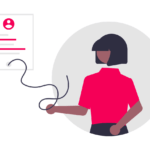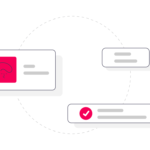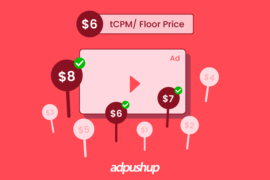A consistently increasing traffic gives you opportunity to experience growing ad revenue. Featuring ads is one of the best monetization strategies as advertisers start to see potential in your website.
But here’s the catch:
With over 2 billion websites and the shrinking users’ attention span of 8 seconds, it can be daunting for publishers to cut through the noise and encourage their visitors to watch and click on the ad.
Many publishers bombard visitors with ads – an average user sees around 5,000 ads – giving the use of ad blockers a rise.
Wouldn’t it be great if you could make the most out of ads without annoying your visitors?
To increase ad revenue, you need to take care of your website visitors and create a smooth user experience. When visitors are satisfied, they are more loyal to your website which allows you to grow ad revenue. This means user satisfaction which translates to user experience optimization.
Case in point:
When Jame Su, the founder of CCNA7, wanted to optimize his ad revenue without disrupting the user experience, he was looking for the right optimization decisions. He reached out to AdPushup and the company helped to show a new set of ads based on time triggers and user engagement which led to a 534% ad revenue increase. Pretty good, right?
In this article, we’re going to share user experience (UX) optimization tips and best practices for publishers.
Top 4 UX Optimization Tips for Better Ad Revenue
No matter what your website idea is, whether you have an e-store, provide services, or promote affiliate links, a good user experience leads to more visits, low bounce rates, and higher conversion rates.
At first blush, it seems visitors hate ads. In fact, they don’t like ads that interrupt, disturb, or clutter. Once your website is optimized for UX, it allows you to build better ad experience which leads to higher ad revenue. In our experience there are four best UX optimization tips to grow ad revenue:
1. Understand Your Website Visitors Well
Create ads that resonate with your website audience. The best way to understand your visitors is to use data and analytics.
Knowing your audience, you can create a better user experience and feature ads within their areas of interest. Luckily, it doesn’t take much time or effort to understand your visitors well. There’s a great variety of data analysis sources and Google Analytics is the most effective tool for publishers to track and observe online behavior and user preferences.
Here’s an example of the audience overview report from Neilpatel.com:
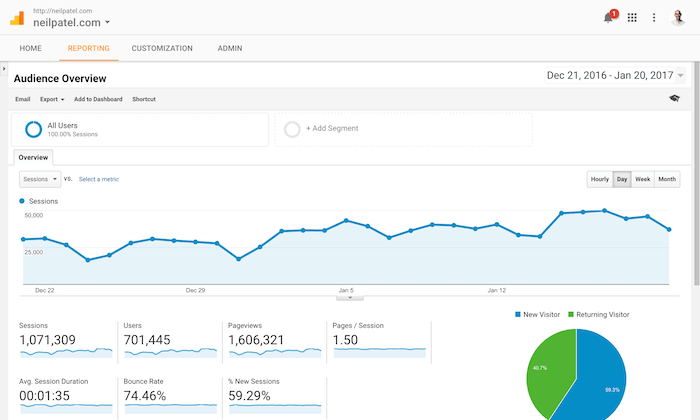
Once you know your audience well, it’s easy for you to create an eye-catching web design, add relevant and useful content, understand visitors’ pain points, choose the best ad type, etc. After all, it’s the first step to UX optimization.
2. Solve Your Users’ Pain Points
Once you know your target audience well, you can identify users’ pain points. Through this, you can build actionable solutions that encourage visitors to come back to your website and therefore increase the average time spent.
One of the best ways to solve users’ pain points is to provide customer support. Live chat is the most effective customer service channel with the highest satisfaction level of 73%.
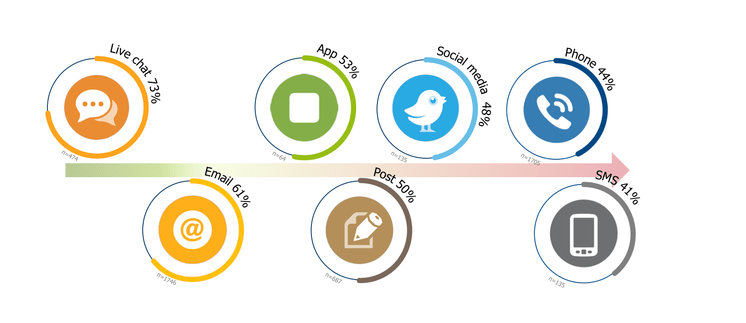
With the right live chat software, you can communicate with your visitors in real-time and listen to their needs and wants. For example, you can add a pop up survey on your website or send customer satisfaction surveys to your user base.
When you listen to your users, you can understand their pain points and provide them with solutions. Not only does it help your website gain loyalty and trust, but it also allows you to create and manage ad campaigns your visitors will love.
3. Keep Up with Ad Trends
Users value their time and they are more likely to choose your competitor for a better user experience. Although you want to monetize your website with ads, featuring aggressive and annoying ads won’t help you grow your ad revenue.
The solution? Keep up with ad trends and understand what your audience will love! Here are the current ad trends:
- Optimize ads for mobile: With the rise of mobile users, it’s important to optimize ads for visitors who access your website on their mobile devices.
- Use hyper-personalized ads: Users are bombarded with irrelevant ads which negatively affects user experience. Using the combination of AI and real-time data allows advertisers to create ads that resonate with user pain points.
- Use video advertising: Since more and more users crave for video content, it’s easier for modern visitors to digest video ads. For advertisers, this also means an opportunity to include more information without annoying the viewers.
Implementing just one of these trends could positively affect your ad revenue, but you can also mix several trends and therefore maximize ad revenue.
4. Experiment and Test Your Ads
To maximize ads, some publishers do research and dig into consumer preferences. After reading the HubSpot research on different ad types, it’s easy to understand that pop-up or banner ads don’t work well for modern customers.
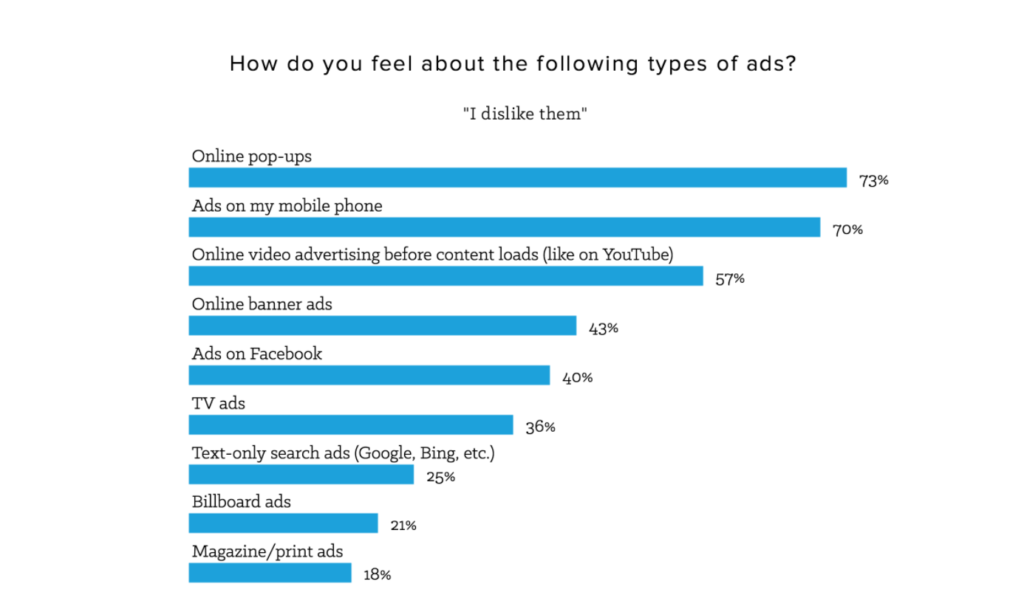
But not all ad trends work well for your audience. If you want to grow ad revenue, you need to be creative and experiment with ads by testing what works best for your audience.
Choosing the best ad location, size, color theme, copy, and CTA is an important element of UX optimization. You can do A/B testing and choose ad types that perform best.
User Experience Optimization Best Practices
User experience optimization is all about knowing your visitors well. Once you improve the quality of the user’s interaction on your site, it affects ad performance. As a result, good UX helps to increase ad revenue.
Here are some user experience optimization practices that boost ad revenue:
Create user-friendly interface: Having a user-friendly website is a proven way to improve user satisfaction as it allows publishers to ensure that the interface is easy to understand and access. When interaction, visual design, and information architecture are structured well, it’s easier for visitors to perceive information.
When it comes to ad placement, it’s also important to choose a specific location of a webpage that doesn’t disturb users from browsing your website. In other words, you need to organize the content and ads in a way that users will appreciate.
For example, you can learn from TechApple and place an ad before content.
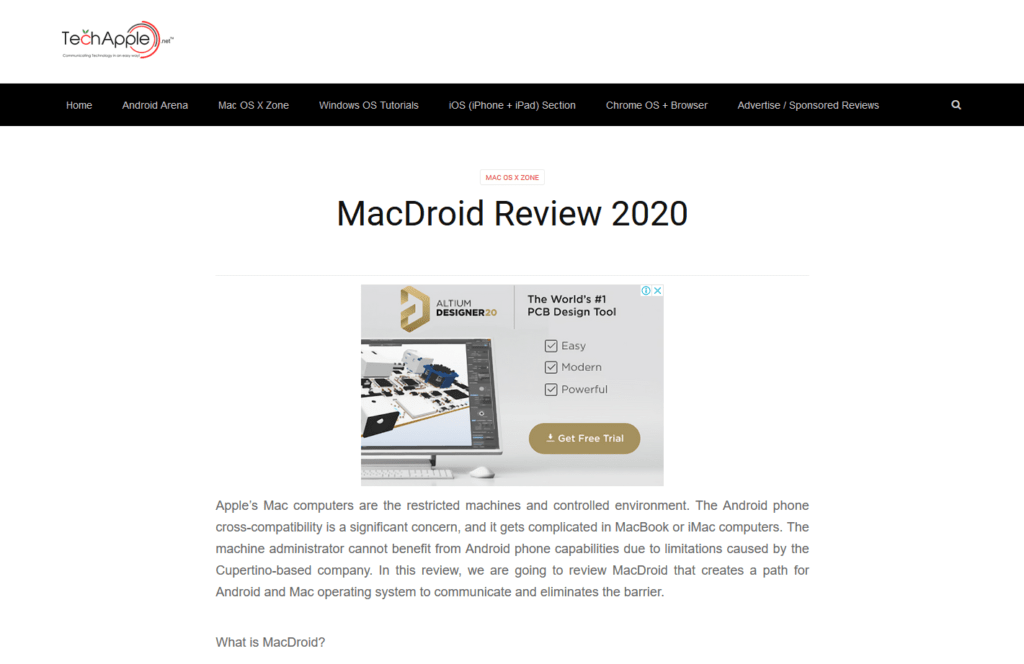
Since this ad unit appears slightly above your blog post, it’s an effective placement that allows publishers to draw attention to the ad without interrupting the user journey.
Feature relevant and useful ads: As a website owner, you want to attract more visitors to your website, right? If so, don’t turn them off by adding inappropriate ads. Not only does it negatively affect user experience, but it also doesn’t help to make money.
People don’t like irrelevant ads, so they are more likely to install an ad block or even leave your website when they see irrelevant ads.
The solution? Put your audience first and lay a bet on relevant and useful ads.
Let’s take a look at Neal Schaffer’s blog. As a business growth consultant who specializes in social media marketing. And he has collaborated with AgoraPulse, a social media tool, to get the best CTR and hence revenue.
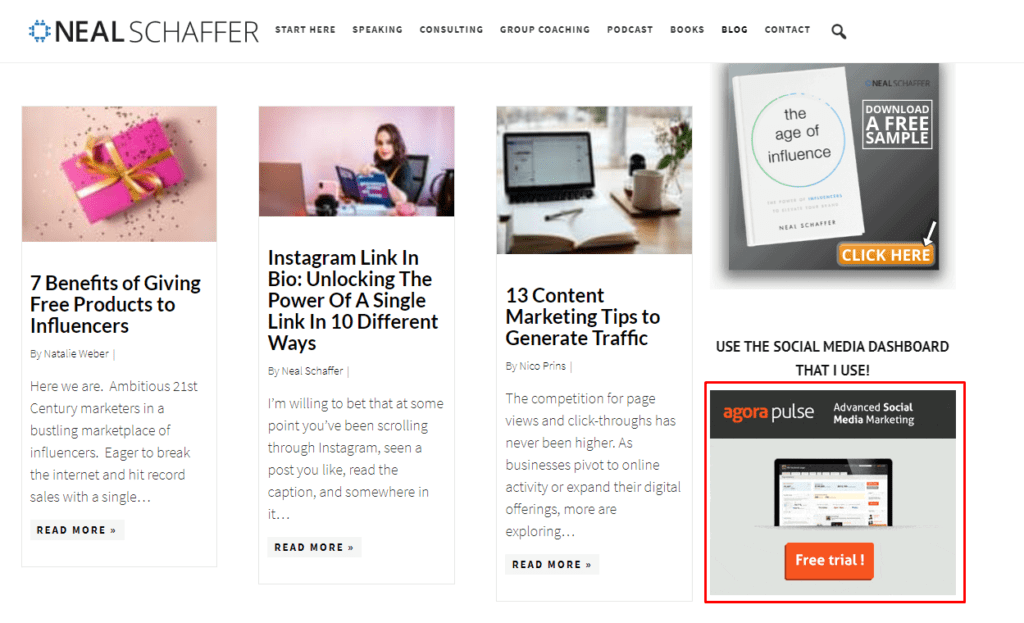
Consider motion ads: Good UX is all about your visitors. To keep your users’ satisfied, it’s important to find an ad solution that grabs the attention of your audience and doesn’t overwhelm visitors, and motion ads are here to help you.
Doubtless, animated banner ads are more interactive which allows publishers to reduce banner blindness and therefore increase ad revenue without annoying users.
To optimize UX and increase ad revenue, make an animation that entertains visitors during scrolling or page loads, just like Windows Dev News did it in the example below:
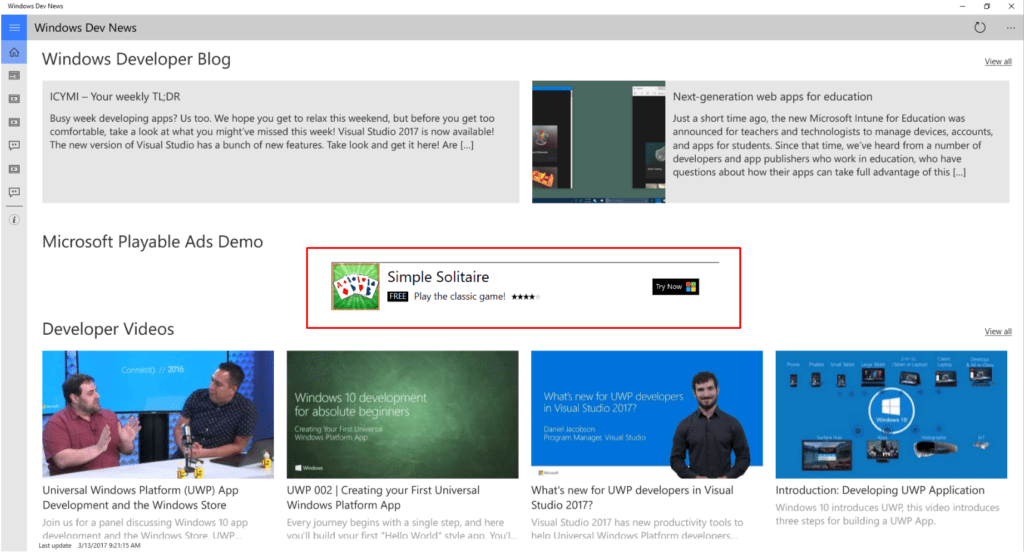
The above-mentioned example is simple yet action-specific which encourages visitors to interact with an ad. Moreover, it doesn’t interrupt visitors which means better UX. Why? Not only do visitors consume interactive content (quizzes, videos, games, etc.) better, but it also encourages visitors to spend much time on your website. Win-win!
More tips on increasing ad revenue:
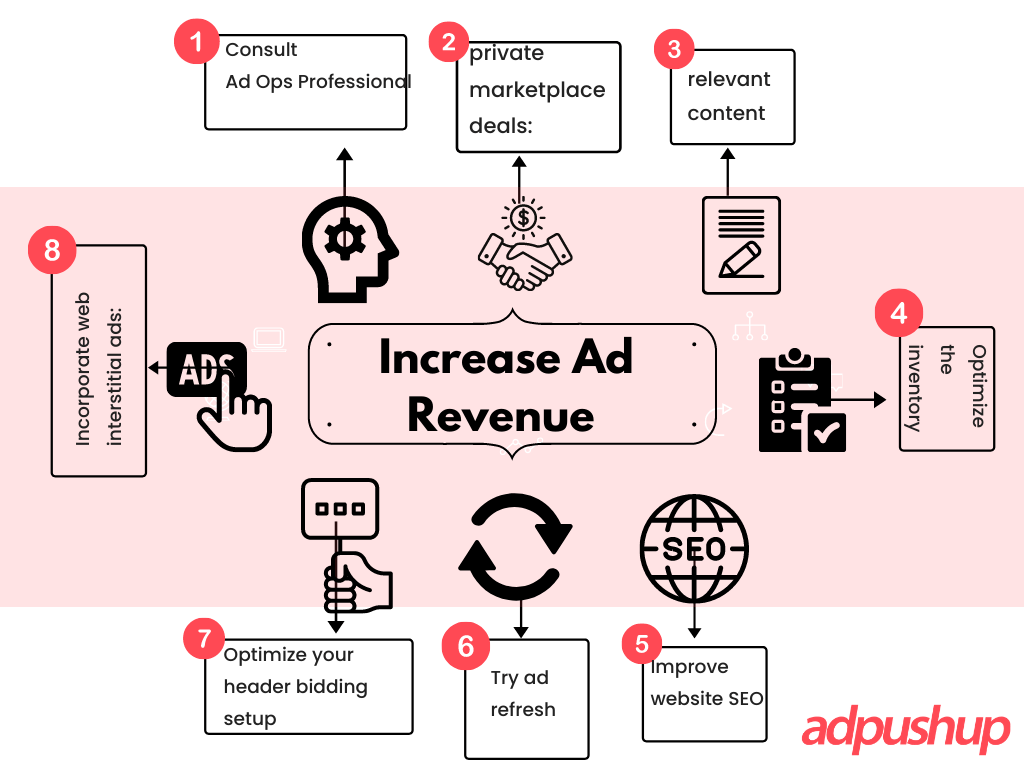
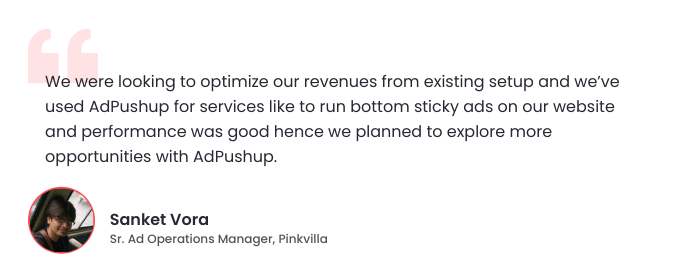
In Closing
User experience optimization can help you focus on your visitors and improve user satisfaction. What is more, it also allows you to increase ad revenue.
When publishing ads on your website, you can take into account your users’ needs and wants and therefore find the best ad solutions for advertisers that users will also appreciate. As a result, it gives publishers an opportunity to attract more visitors and make money.
This is a guest post by Hugh Beaulac. He is a content strategist at MC2 website who has over 7 years of digital marketing experience, so he also writes for top-notch blogs to share his tips and tricks.

Shubham is a digital marketer with rich experience working in the advertisement technology industry. He has vast experience in the programmatic industry, driving business strategy and scaling functions including but not limited to growth and marketing, Operations, process optimization, and Sales.

